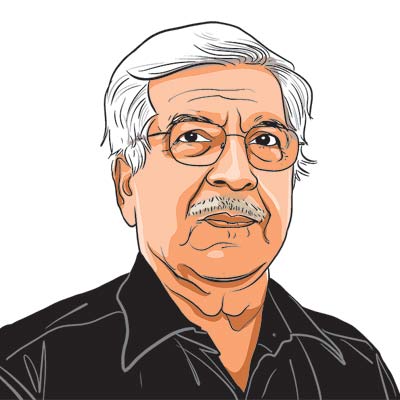Opinion The full and empty thali
A bumper foodgrain crop but is that really enough?
Krishi Bhawan took legitimate pride in the announcement that the agricultural growth rate this year will be 5.4 per cent. The point was made that this growth is doubly blessed coming from the eastern region,and that pulses are doing well. Rice,too the campaign for hybrid paddy seems at last to be bearing fruit.
Of course,it is true that agricultural growth after a bad year is always high,since the economy makes up for the losses of the earlier bad monsoon. However,the average growth rate for the last three years is still only a tad above 2 per cent.
Of course,for macro economy impacts,supplies will have to be counted at a 2 per cent rate hitting 7 per cent consumption growth. The thali is filling up,but given our appetite it is also half empty.
The agriculture ministry is within its rights in claiming good performance. So is the prime minister in saying that the biggest threat to growth is inflation.
The debates we are going through reflect only a dim understanding of the nature of our problems. For example,in the so-called debate on food security between the PMs economic advisory council and the National Advisory Council both relied on a normative per capita consumption of grains,say 18 kg per person per month. The only controversy was over which poverty numbers to take and the numbers have their problems,which I know very well,having chaired the task force which designed the original poverty line.
But this debate is irrelevant,and meanwhile,the real issue is ignored. That issue is that the poor,whichever way you define them,dont want grain,but want the food they like. This no one talks about because they cannot be given that food by any sarkar.
The fact that poor Indians by now have a very low propensity to demand grain,and those who insist on giving them half a kg a day (both the NAC and the PMEAC,as well as others) are living in a world of their own. The poor Indian may have been like that when we were living from ship to mouth,but the poor Indian then was much poorer than today.
We once estimated demand behaviour separately for the rich and the poor in rural and urban areas. That work was of an enduring kind,and was used for dual pricing strategies using markets and PDS.
In those days,we found that if income went up by 1 per cent the rural poor would increase their consumption of wheat by 1.82 per cent and of rice by 0.88 per cent. The tradition of estimation we started was continued; by this century,those numbers had changed. Now,if income went up by 1 per cent,the consumption of grain by the rural poor went up only by 0.46 per cent.
In other words,if income went up,the most vulnerable in India the rural poor would increase their demand for grains by a third less than three decades ago.
Now income of the poor can go up by market forces,but also by NREGA and now food security for,if they get 18 kg of grain,they will have that much more income. So if they wont eat that much grain what will they do if we give it to them?
Fortunately,we track that too. If the income of the poor went up by 1 per cent,their demand for pulses would then go up by 1.4 per cent,of fruits by 1.04 per cent,of milk and milk products by 2.36 per cent,of meat and eggs by 1.39 per cent,of sugar by 1.47 per cent and so on and so forth. It makes sense to give the poor girl child milk to keep her in school and of course an egg.
The Indian dilemma is not just food supply bottlenecks in a fast-growing economy,but pushing grain without developing the rest adequately. We need some more grain,say 15 per cent more in the rest of the decade,produced with high technology and less land.
We need everything else a lot more to give energy and satisfaction to all our people,particularly as the poor get their place in the sun.
If we dont do it,they will sell the grain and buy what they want. But we will destroy our capability for widespread growth,the only real food security for a billion-plus nation on the move.
The writer,a former Union minister,is chairman,Institute of Rural Management,Anand,express@expressindia.com





